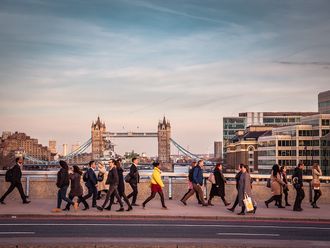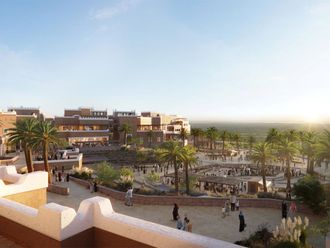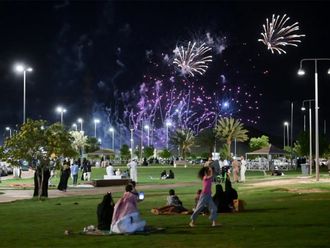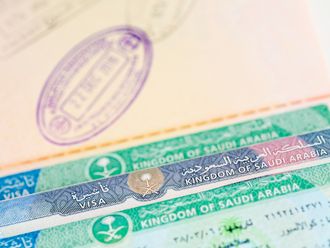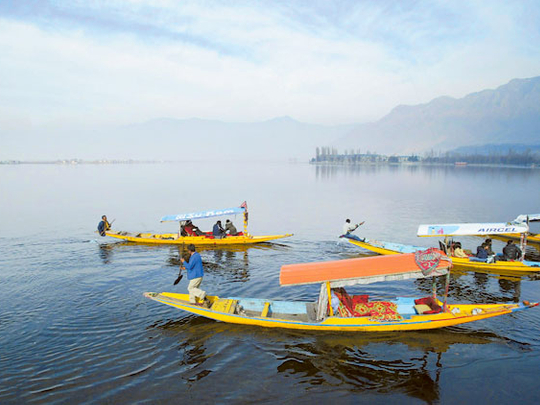
New Delhi: Hotel owner Wahid Malik drives his ball down the fairway at the Royal Springs Golf Course in India-administered Kashmir, taking a break from hosting tourists flocking to the disputed region guarded by half a million soldiers and police.
Malik plans to build a new guest house to cash in on a tourism boom that has seen the number of visitors double to a record 2 million in the past year, to an area over which nuclear-armed India and Pakistan have fought two wars. With an anti-Indian insurgency causing the fewest deaths since it began in 1989, five-star hotels are full and the cost of flights to Kashmir’s summer capital of Srinagar is up 40 per cent.
“Our hope is that a few years from now, Kashmir will no longer be known as a place of tanks and troops,” said Malik, 50, whose hotel is overlooked by 2,700-metre Himalayan peaks and served as a residence for the army for 15 years until 2005. “No one who lived through the dark days wants a return.”
The tourist rush promises jobs in a region where half the population aged between 18 and 30 are out of work. Getting more young Kashmiris into full-time employment can further lower violence and aid peace moves along the subcontinent’s most intractable fault line, where fighting between militants and India’s army has killed 50,000 people over more than two decades.
“The security situation feeds off unemployment,” Omar Abdullah, 42, the chief minister of the Indian state of Jammu and Kashmir, said in an interview in Srinagar. “A youngster who is poorly educated with dismal job prospects is more likely to be recruited into militancy.”
‘Only Answer’
While the return of the tourists brings hope, Kashmir won’t be at peace until India and Pakistan reach a political solution for the region that’s been at the core of their conflict for seven decades, according to Abdullah, whose father and grandfather both led the state.
“We don’t see tourism as a barometer of normalcy,” he said, sitting on the balcony of his heavily fortified hillside home. “The problem in Kashmir is political. So even if militancy were to disappear tomorrow, we still need to address this problem. That’s the only answer.”
It was the mix of natural beauty and a hybrid culture blending Sufi Islam, Hinduism and other faiths that each year in the 1980s drew more than 650,000 Indian tourists, western backpackers and skiers.
Trekkers’ Kidnapping
By the end of the decade, an election widely perceived as rigged energised the separatist movement. The 1995 kidnapping of six westerners by Islamist militants demanding that India free jailed militants dealt a hammer blow to Kashmir tourism, resulting in the decapitation of a Norwegian hiker and disappearance of four others. Visitors plunged to 60,000 that year, government data show.
Pressure on Pakistan from the US, its biggest aid donor, to drop state support for Islamist groups, and improved Indian defences have seen the cross-border insurgency decline, with deaths down 90 per cent since 2005.
Anger over alleged human-rights abuses by Indian soldiers and a lack of self-rule can still boil over into street clashes, such as those in 2010 in which police shot dead almost 100 protestors.
With India and Pakistan re-engaging in peace talks and pursuing their biggest initiative yet for cross-border trade, the fall-off in violence is reviving the Kashmiri economy.
Dal Lake
Vivanta by Taj, the Tata Group’s five-star hotel on a forested hilltop overlooking Dal Lake with room rates of as high as $300 (Dh1,101), has been booked out since May. The luxury Lalit hotel located in the residence of Kashmir’s last maharajah is full. Billionaire Anil Ambani, who runs part of the Reliance empire, and Hero Motocorp Ltd Chairman Brijmohan Munjal were among this summer’s guests, said Ashwani Patel, the Lalit’s manager.
“This year has surpassed all our expectations,” making the hotel the chain’s best-performing property on a room-to-revenue basis across nine Indian cities, said Patel, 32.
The first five-star hotel in the ski resort of Gulmarg is being built by US-based Interstate Hotels & Resorts Inc and Kashmiri business group Khyber Industries Ltd. The 85-room hotel is due to open in October.
“Investing in Kashmir is no longer a roll of the dice,” Umar Tramboo, a director at Khyber, said in an interview.
Tourism is once again the second-largest employer, after farming, and accounts for 20 per cent of Jammu and Kashmir’s $9 billion economy, which grew 6.6 per cent last year, according to government data. Abdullah’s administration says a prolonged calm will see annual 10 per cent growth in tourist arrivals over the next decade.
Mirwaiz Umar Farooq, the head Muslim priest of Kashmir and chairman of the All Parties Hurriyat Conference, a coalition of pro-independence parties, said the return of tourists will help improve life for the valley’s “downtrodden” people.
“That doesn’t mean peace has returned to the valley,” Farooq said by phone from Srinagar. “Yes people want better education, better health care and better roads. That doesn’t mean they don’t want freedom. The government of India should come up with something substantial in terms of moving forward.”
Separatist leader Syed Ali Shah Geelani says only 2 per cent to 3 per cent of Kashmiris would benefit from the tourists’ return.
“We remain under occupation and a very brutal occupation,” said Geelani. “There isn’t real peace, this is a managed peace.”


